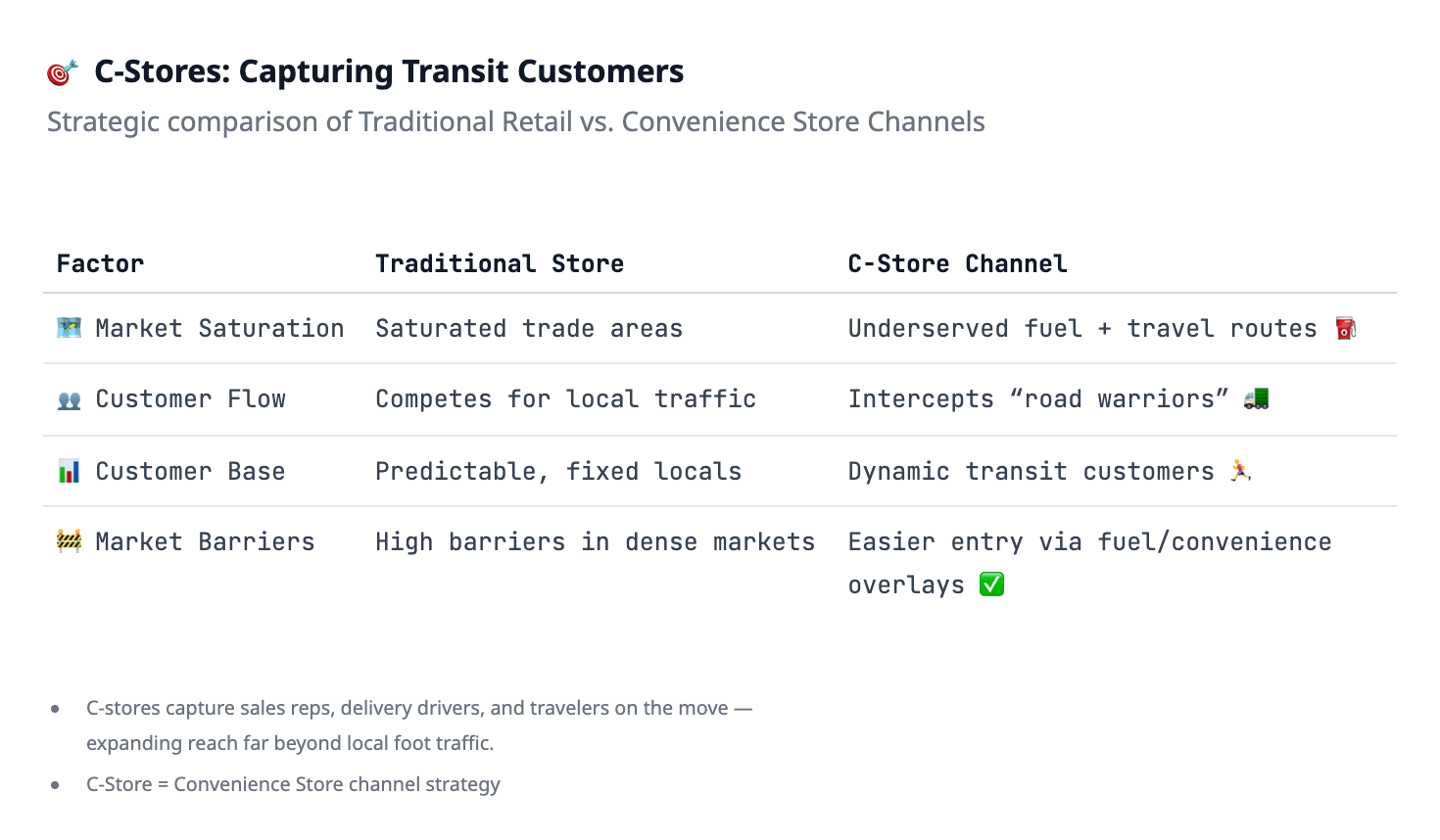Who Are the Road Warriors?
Road warriors are the people who keep the economy moving. They are:
Sales reps traveling between accounts
Service technicians keep businesses and homes running
Delivery drivers moving products across regions
Business travelers are constantly in transit
Most Americans live on a predictable loop: the same schedule, the same commute, and the same neighborhood grocery store or coffee shop.
Road warriors are different. Their “loop” is the highway. Their stops are fuel stations, rest breaks, and quick food along the route. Their time is limited, their needs are consistent, and they generate a steady stream of demand that rarely gets recognized in traditional development strategies.
Why They’re Overlooked
Most traffic studies focus on two things:
Local volumes — how many people live nearby
Competitor foot traffic — where those locals choose to spend money
That lens misses the road warriors. They aren’t tied to neighborhoods. They move through markets continuously, creating predictable demand that traditional retail models often fail to capture.
C-Stores Change the Equation
Traditional QSR units face heavy headwinds: saturated corridors, high rents, and shrinking margins. Adding another store in the same trade area often delivers diminishing returns.

C-stores flip the model:
Positioned on high-traffic transit corridors
Accessible to anyone passing through
Naturally aligned with road warriors already stopping for fuel, rest, or quick food
This makes convenience-based formats one of the most underutilized strategies for capturing transit-driven revenue.
Final Thoughts
Road warriors are the backbone of daily commerce — yet one of the most underserved customer groups in America.
For brands, leaning into C-store partnerships isn’t just about building another unit; it's about leveraging a new channel to reach customers.
📩 Not a subscriber yet?
What’s great is… almost no one has access to the raw truth behind QSR and franchise economics.
👉 Join thousands of readers who cut through the noise and get the facts that drive real decisions.
